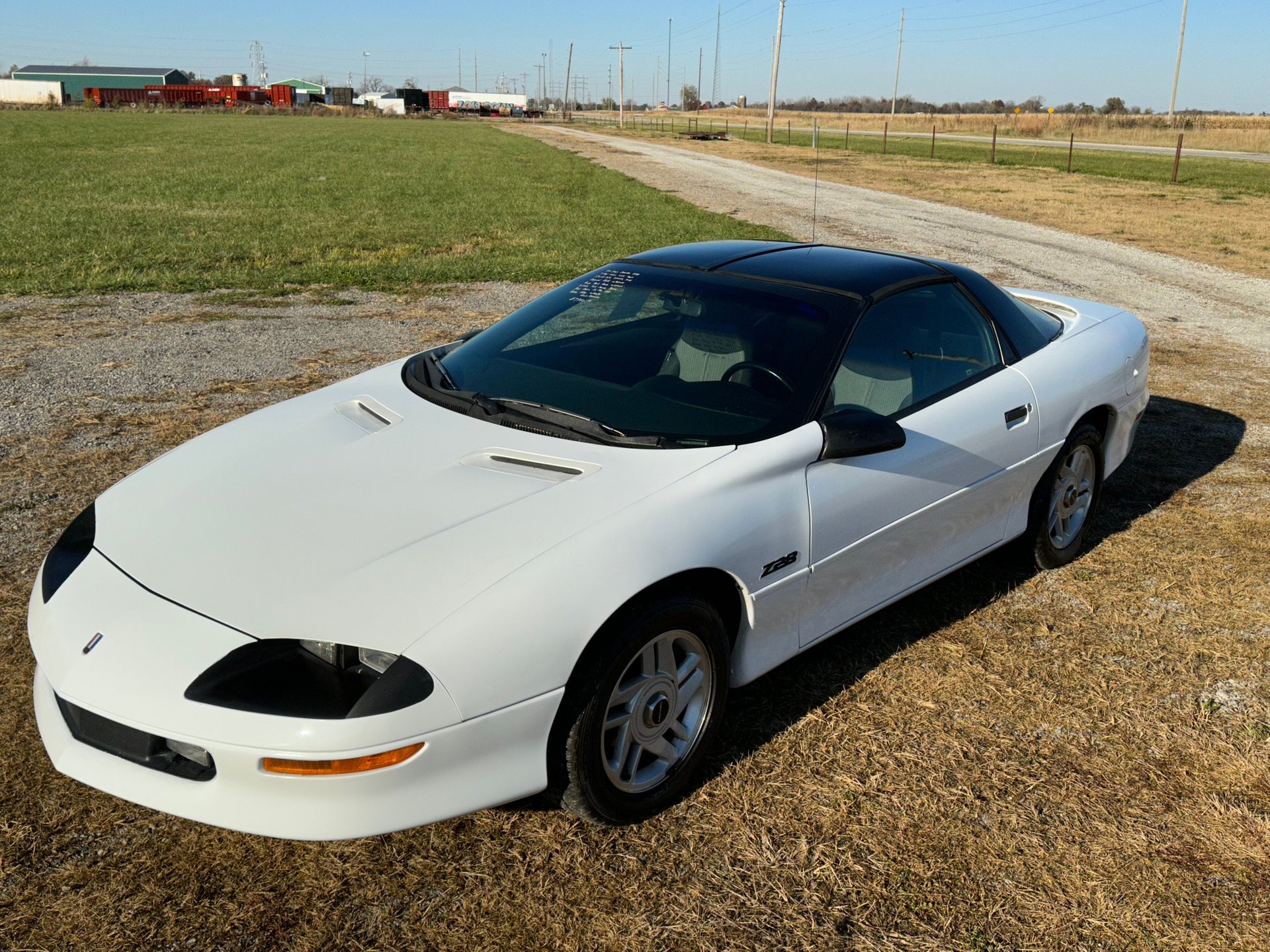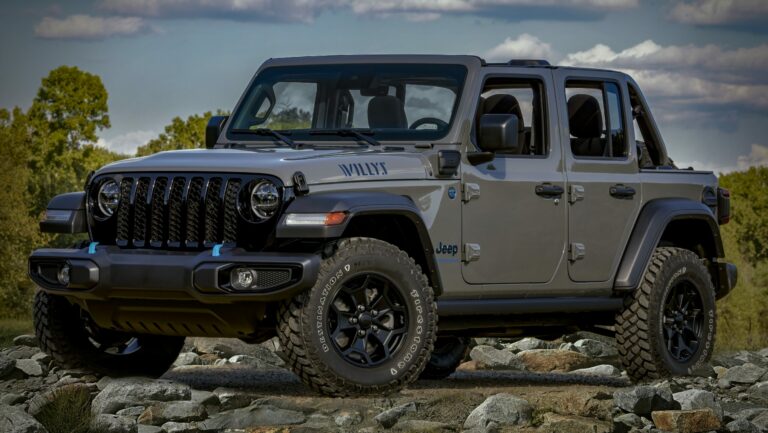1994 Jeep Wrangler 2 Door: A Deep Dive into an Off-Road Icon
1994 Jeep Wrangler 2 Door: A Deep Dive into an Off-Road Icon jeeps.truckstrend.com
The year 1994 holds a special place in the lineage of the iconic Jeep Wrangler. It represents a near-culmination of the YJ generation, a distinct chapter in Jeep’s storied history marked by a polarizing yet enduring design choice: square headlights. Far more than just a stylistic anomaly, the 1994 Jeep Wrangler 2 Door embodies the rugged spirit of its predecessors while offering a blend of utilitarian simplicity and genuine off-road capability that continues to captivate enthusiasts and adventurers alike. This comprehensive guide will explore every facet of the 1994 YJ, from its mechanical heart to its enduring legacy, providing a valuable resource for anyone considering owning, maintaining, or simply appreciating this classic American 4×4.
The YJ Generation: A Brief History & 1994’s Place
1994 Jeep Wrangler 2 Door: A Deep Dive into an Off-Road Icon
The Jeep Wrangler YJ (1987-1995) was a significant departure from the CJ series it replaced. While retaining the fundamental open-air, go-anywhere philosophy, the YJ introduced a wider stance, a slightly lower center of gravity, and, most notably, rectangular headlights—a design decision that sparked immediate debate among purists. Jeep’s reasoning was largely practical: square headlights were cheaper to manufacture, provided better illumination, and allowed for a wider grille.
By 1994, the YJ was well into its production run, having benefited from several refinements since its 1987 debut. The 1994 model year saw no radical changes from its immediate predecessors (1991-1993 models, which saw the introduction of the acclaimed 4.0L inline-six engine). It represented a mature version of the YJ, offering solid reliability and proven performance. It retained the familiar two-door configuration, removable doors, fold-down windshield, and solid axles that defined the Wrangler experience. For many, the 1994 YJ stands as the most refined iteration of the square-headlight era, bridging the gap between the raw simplicity of the CJs and the more modernized TJs that would follow.
Under the Hood: Engine & Drivetrain Options
The 1994 Jeep Wrangler 2 Door offered two robust and well-regarded engine options, both known for their durability and torque output, making them ideal for off-road applications.
- 2.5L AMC 150 Inline-4 (I4): This 2.5-liter engine, producing approximately 123 horsepower and 139 lb-ft of torque, was the standard powerplant. While not a powerhouse, it was known for its reliability and decent low-end torque, making it perfectly adequate for light off-roading and general utility. It’s also relatively fuel-efficient for a Jeep of its era.
- 4.0L AMC 242 Inline-6 (I6): The undisputed king of YJ engines, this 4.0-liter inline-six generated a healthy 180 horsepower and 220 lb-ft of torque. Renowned for its legendary reliability and abundant low-end torque, the 4.0L is highly sought after for its off-road prowess and highway cruising capabilities (relative to the 2.5L). Many consider it one of the best engines ever put into a Jeep.

Transmission Options:
Both engines could be paired with either a manual or an automatic transmission:
- Manual Transmissions:
- Aisin AX-5 (5-speed): Paired with the 2.5L engine. Known to be somewhat less robust than the AX-15 but generally reliable if not abused.
- Aisin AX-15 (5-speed): Paired with the 4.0L engine. A highly regarded and durable transmission, popular for its smooth shifts and resilience.

- Automatic Transmissions:
- Chrysler Torqueflite 904 (3-speed): Paired with the 2.5L engine. A simple, sturdy, and reliable automatic.
- Chrysler Torqueflite 999 (3-speed): Paired with the 4.0L engine. Similar to the 904 but built for the higher torque of the 4.0L. Also a very durable unit.
Transfer Case & Axles:
All 1994 Wranglers featured the New Process Gear NP231 Command-Trac part-time transfer case, offering 2WD High, 4WD High, and 4WD Low. This is a very strong and popular transfer case, widely used across many Jeep models.
Regarding axles, the 1994 YJ typically came with:
- Front Axle: Dana 30: A common and reasonably strong front axle for stock applications, though upgrades are often considered for heavy off-roading.
- Rear Axle: Dana 35: The standard rear axle. While adequate for stock applications, the Dana 35 is often considered the weakest link for serious off-roaders and is a common candidate for upgrades (e.g., to a Ford 8.8 or Dana 44) if larger tires and aggressive driving are planned. A Dana 44 rear axle was extremely rare as a factory option on 1994 YJs, primarily seen on some earlier high-trim models.
Exterior & Interior Design: Form Meets Function
The 1994 Jeep Wrangler’s design is a testament to form following function. Every element serves a purpose, contributing to its iconic and highly recognizable silhouette.
Exterior:
- Classic Wrangler Lines: Despite the square headlights, the 1994 YJ unmistakably carries the traditional Jeep DNA: seven-slot grille, exposed hood latches, flat fenders, and a short wheelbase.
- Removable Doors & Fold-Down Windshield: These signature features offer an unparalleled open-air driving experience, connecting occupants directly with their surroundings. The doors are half-doors with soft tops as standard, but full hard doors were an available option, providing better weather protection and security.
- Soft Top & Hardtop Options: The YJ came standard with a removable soft top, perfect for summer adventures. An optional fiberglass hardtop offered greater security, better insulation, and a quieter ride for colder climates or daily driving. Both are relatively easy to remove or install with a little practice.
- Square Headlights: The defining characteristic of the YJ, often a point of contention among purists, but now largely embraced as a unique identifier of this generation.
Interior:
The interior of a 1994 YJ is best described as simple, utilitarian, and durable. Creature comforts are minimal, focusing on functionality and ease of cleaning.
- Basic Layout: A straightforward dashboard with analog gauges, manual controls for heating/ventilation, and a basic radio.
- Durable Materials: Seats and floor coverings were designed to withstand exposure to the elements and dirt, often made from vinyl or robust cloth. Drainage plugs in the floor pan allowed for easy hose-outs after muddy adventures.
- Limited Space: As a two-door vehicle, rear passenger space is snug, and cargo room behind the rear seat is minimal, especially with the rear seat in place. The rear seat can be folded or removed to expand cargo capacity.
Off-Road Prowess & On-Road Compromises
The 1994 Jeep Wrangler 2 Door was purpose-built for off-road capability, and it excels in that environment. Its solid axles, relatively short wheelbase (93.4 inches), good ground clearance, and robust 4×4 system make it incredibly capable on trails, rocks, and uneven terrain. The approach and departure angles are excellent, allowing it to climb and descend steep obstacles with ease.
However, these very strengths translate into certain compromises on paved roads:
- Rough Ride: The solid axle suspension, designed for articulation and durability off-road, can feel stiff and bouncy on uneven pavement.
- Road Noise & Wind Buffeting: With soft tops and removable doors, wind noise is prevalent, and the cabin is not insulated for a quiet ride.
- Loose Steering: Older Jeeps, especially those with worn steering components, can exhibit significant play in the steering, requiring constant corrections on the highway. This can sometimes contribute to the infamous "death wobble" if suspension components are worn or improperly installed.
- Not a Highway Cruiser: While the 4.0L can maintain highway speeds, the YJ is not designed for long, comfortable road trips. Its charm lies in its utility and adventure-ready nature.
Common Issues & Maintenance Tips
Owning a 1994 YJ means embracing its quirks and understanding its common vulnerabilities. Regular maintenance is key to keeping it running reliably.
Common Issues:
- Rust: This is the most significant enemy of older Wranglers. Check the frame (especially near the skid plate and control arm mounts), body mounts, floor pans, rocker panels, and rear quarter panels. Rust can compromise structural integrity.
- Leaks: Soft tops and door seals are notorious for leaking, especially as they age. Engine and transmission fluid leaks are also common due (often due to old seals and gaskets).
- Electrical Gremlins: Older wiring, corroded connections, and aftermarket accessories can lead to various electrical issues, from non-functioning gauges to intermittent lights.
- Steering Play/Death Wobble: Worn tie rod ends, ball joints, track bar, or control arm bushings can lead to excessive steering play and, in severe cases, the terrifying "death wobble" at certain speeds.
- Dana 35 Limitations: As mentioned, the Dana 35 rear axle can be prone to failure if subjected to larger tires and aggressive off-roading without reinforcement or replacement.
- Heater Core Issues: A common failure point, leading to a lack of heat or a foggy cabin from coolant leaks.
Maintenance Tips:
- Rust Prevention: Regular washing (especially after winter driving or off-roading) and application of rust inhibitors are crucial. Address any surface rust immediately.
- Fluid Changes: Adhere to regular schedules for engine oil, transmission fluid, transfer case fluid, and differential fluid changes.
- Inspect Suspension & Steering: Regularly check all components for wear, play, or damage. Replace worn parts promptly to ensure safe handling.
- Check for Leaks: Periodically inspect for fluid leaks from the engine, transmission, transfer case, and differentials.
- Soft Top Care: Clean and treat soft tops regularly to prolong their life and maintain water resistance. Replace worn seals.
- Basic Tune-ups: Keep spark plugs, air filter, and fuel filter fresh.
Buying a 1994 Jeep Wrangler Today: What to Look For
Purchasing a 1994 YJ is an investment in a lifestyle, but it requires careful inspection.
- Thorough Rust Inspection: This is paramount. Get under the vehicle with a flashlight. Pay close attention to the frame, body mounts, and floorboards. Surface rust is manageable; structural rust is a major red flag.
- Engine Condition: Listen for unusual noises (knocks, ticks), check for excessive smoke from the exhaust, and look for fluid leaks. Check oil levels and condition.
- Drivetrain Health: Test 4WD High and 4WD Low. Listen for grinding or clunking from the transmission or transfer case. Check for leaks around the differentials.
- Steering & Suspension: Drive the vehicle at various speeds. Note any excessive play in the steering wheel, vibrations, or unusual noises over bumps.
- Electrical System: Test all lights, gauges, wipers, heater, and radio.
- Body & Interior: Inspect for accident damage, condition of the soft top or hardtop, and overall cleanliness and wear of the interior.
- Modified vs. Stock: Heavily modified Jeeps can be a mixed bag. Ensure modifications were done professionally and with quality parts. Stock or lightly modified Jeeps are often safer bets for first-time owners.
- Paperwork: Verify title, service records (if available), and recent inspection reports.
Customization & Aftermarket Support
One of the greatest appeals of the 1994 Jeep Wrangler is its immense customizability. The aftermarket support for the YJ generation is vast, allowing owners to tailor their vehicle to their specific needs and preferences.
- Lift Kits & Larger Tires: The most common modification, enhancing ground clearance and off-road capability.
- Bumpers & Armor: Heavy-duty bumpers, rock sliders, and skid plates protect the vehicle during aggressive off-roading.
- Winch Systems: Essential for recovery in challenging terrain.
- Interior Upgrades: Aftermarket seats, sound systems, and storage solutions can improve comfort and utility.
- Engine & Drivetrain Swaps: For extreme performance, some enthusiasts swap in more powerful engines or upgrade axles and transfer cases.
The sheer volume of available parts and the strong community (the "Jeep Wave" is real!) mean that YJ owners are never alone in their adventures or their projects. This strong support network is a significant advantage of owning an older Wrangler.
Practical Advice and Actionable Insights
So, is a 1994 Jeep Wrangler 2 Door right for you?
- It’s for the Adventurer: If you love off-roading, camping, or simply exploring forgotten trails, the YJ is an excellent companion.
- It’s for the DIY Enthusiast: If you enjoy working on vehicles, learning mechanics, and customizing your ride, the YJ offers endless opportunities. Its mechanical simplicity makes it relatively easy to work on.
- It’s Not a Luxury Commuter: If you prioritize a quiet, smooth, and feature-rich daily driver, look elsewhere. The YJ is rugged, not refined.
- Budget for Maintenance: Older vehicles require more attention. Factor in a budget for routine maintenance, potential repairs, and any desired modifications. Finding a mechanic familiar with older Jeeps is a definite plus.
Embrace the quirks, understand its limitations, and you’ll find an incredibly rewarding ownership experience.
1994 Jeep Wrangler 2 Door Price Table
Current market values for a 1994 Jeep Wrangler 2 Door vary significantly based on condition, mileage, modifications, and location. This table provides a general estimate.
| Condition Category | Estimated Price Range (USD) | Key Characteristics |
|---|






